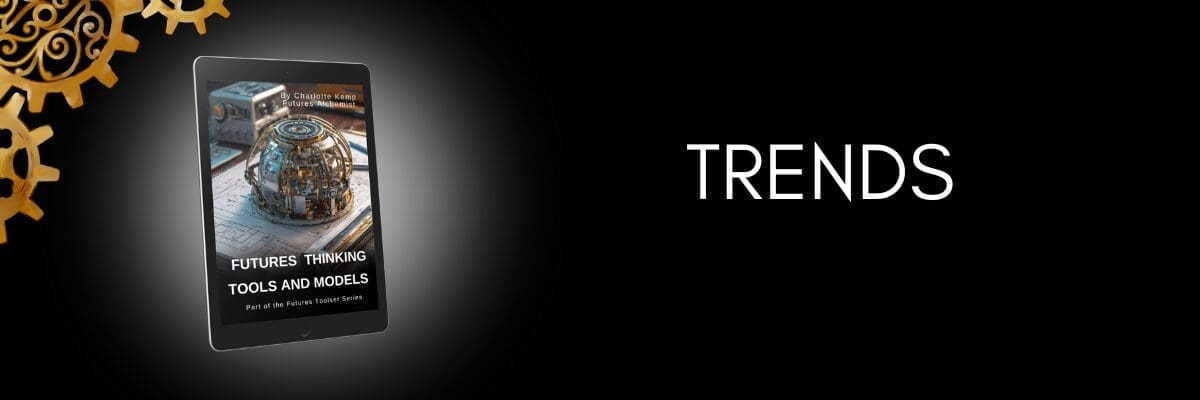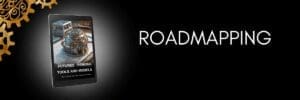
Introduction
A trend is a pattern of change over time that shows a general direction of movement. It could be increasing, decreasing, or transforming and could relate to behaviors, values, technologies, or systems. In strategic foresight, a trend represents a cluster of signals or data points that, taken together, indicate a shift that is likely to continue or evolve.
Trends provide the foundation for identifying potential drivers of change, emerging issues, and possible futures.
Importantly, trends are not predictions, they are observations of movement that help us make sense of what is changing, why, and how fast.
Trends are the footprints of the future giving evidence of where change is already underway.
Lorem ipsum dolor sit amet, consectetur adipiscing elit. Ut elit tellus, luctus nec ullamcorper mattis, pulvinar dapibus leo.
What It Looks Like
When using trend analysis in foresight work, practitioners typically:
- Gather and cluster signals from scanning activities.
- Name and describe the emerging trend (e.g., “Rise of Distributed Energy,” “Decentralized Identity”).
- Provide evidence such as data points, examples, or case studies showing the trend’s evolution.
- Assess key dimensions such as drivers, impacts, maturity, level of uncertainty, and time horizon.
- Explore implications like how the trend could affect an organization, sector, or society.
- The outputs can be collected into a Trend Report, Trend Deck, or Trend Atlas, often visualized as infographics, storyboards, or short narratives that make the dynamics of change accessible to decision-makers.
Examples
A well-known example is the rise of digital connectivity. In the 1990s, weak signals such as email and early websites pointed to a growing shift in communication patterns.
By the 2000s, this became a dominant social and economic trend, the digitization of everything, driving e-commerce, remote work, and the platform economy.
Today, we see the trend evolve further into the Internet of Things, AI integration, and virtual presence.
Other influential trends tracked globally include urbanization, aging populations, climate adaptation, and automation, each shaping long-term policy and investment decisions.
How and When It Is Used
Trend analysis is typically used early in the foresight process (after scanning) to organize and interpret the signals of change.
It is used to:
- Identify emerging opportunities and risks.
- Support scenario building by defining key drivers and certainties.
- Test or stress strategies under various trend trajectories.
- Communicate futures intelligence to leaders, boards, and the public.
- Trends are especially useful for organizations needing to stay ahead of shifts in consumer behavior, technology adoption, regulatory change, or societal values.
- In practice, trend analysis is ongoing. Its a living process of monitoring, updating, and reinterpreting how the world’s momentum is changing.
Other uses
- Cultural and Design Futures: Trend analysts in fashion, art, and design use trends to explore shifting aesthetics and social moods rather than just data points.
- Reverse Trendspotting: Some futurists track counter-trends — reactions against dominant patterns (e.g., digital detox as a response to hyperconnectivity).
- AI-Powered Trend Mining: Modern foresight labs use AI to scrape social media, patents, and publications to detect weak signals forming into trends.
- Narrative Trends: Instead of statistics, some practitioners describe trends as evolving stories that trace how societal values and identities change over time.
- Metatrends and Cross-Currents: In advanced foresight, analysts identify intersections between trends (e.g., AI + sustainability = smart climate tech) to discover new innovation frontiers.
Origin
The study of trends emerged from several overlapping disciplines:
- Sociology and demography (e.g., long-term population and social behavior studies in the early 20th century).
- Marketing and consumer research, where trendspotting became a way to anticipate market shifts.
- Futures studies, particularly from the 1960s onward, where scholars like Alvin Toffler (Future Shock, 1970) and John Naisbitt (Megatrends, 1982) popularized trend analysis as a way to interpret technological and social transformations.
- In academic foresight, trend analysis was refined through the work of institutions such as the Institute for the Future (IFTF), OECD, and UNESCO, where it became a systematic part of scanning and scenario development.




